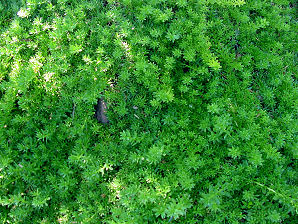Arizona Landscaping Plants And Flowers.
Pictures, Photos, And Planting Information.
Groundcovers.
Prostrate Myoporum, Myoporum parvifolium.
We Are Proud Of Our SafeSurf Rating!
Click On Any Of The Following Links By Amazon.Com
For Books, & Videos About Wildflowers Of Arizona & The Southwest USA. No Obligation!
 |
| Prostrate Myoporum, Myoporum parvifolium. Photo March 23, 2003 In Glendale, Arizona. |
|---|
 |  |
| Prostrate Myoporum. Myoporum parvifolium. Common Landscape Plant. | Myoporum parvifolium Blossoms. Common Groundcover. Native Of Australia. |
|---|
Prostrate Myoporum.
We wish to thank Wikipedia, the free encyclopedia for some of the information on this page. We share images and information with Wikipedia. A dense, weed suppressing evergreen, perennial, ground cover, native of Southwest Asia, brought to the US from Australia, used at one time in Arizona for Xeriscape Landscaping. Individual plants will cover an area in excess of one square yard. In Australia, it is said the fruits are quite sweet and have been eaten by humans. It is even a fire retardant! Attracts bees when in flower. It is not a low water use plant, but it does make a good ground cover. It is too brittle for foot traffic. San Diego California County has listed the plant as invasive.
Quick Notes:
Height: About 3 - 12 inches. Spreading out to about 6 feet wide.
Flowers: Small White Flowers. Five Petals with Blue- Violet Anthers. There is also a pink petal variety. The flowers are followed by purple berries.
Flowering Time: April - May.
Leaves: The leaves are alternate, �" long, and serrulate.
Found: Native to Australia.
Hardiness:
Soil pH requirements:
Sun Exposure:
Elevation: 0 - 4,500 Feet.
Habitat: On cultivated land, it prefers full sun and moist conditions. Used as a landscape plant.
Miscellaneous: Flowering Photos Taken March 23, 2003 In Glendale, Arizona.
|
We Are Proud Of Our SafeSurf Rating!
Click On Any Of The Following Links By Amazon.Com
For Books, & Videos About Wildflowers Of Arizona & The Southwest USA. No Obligation!
| © 1966 - Present, Audrey, Eve, & George DeLange |
